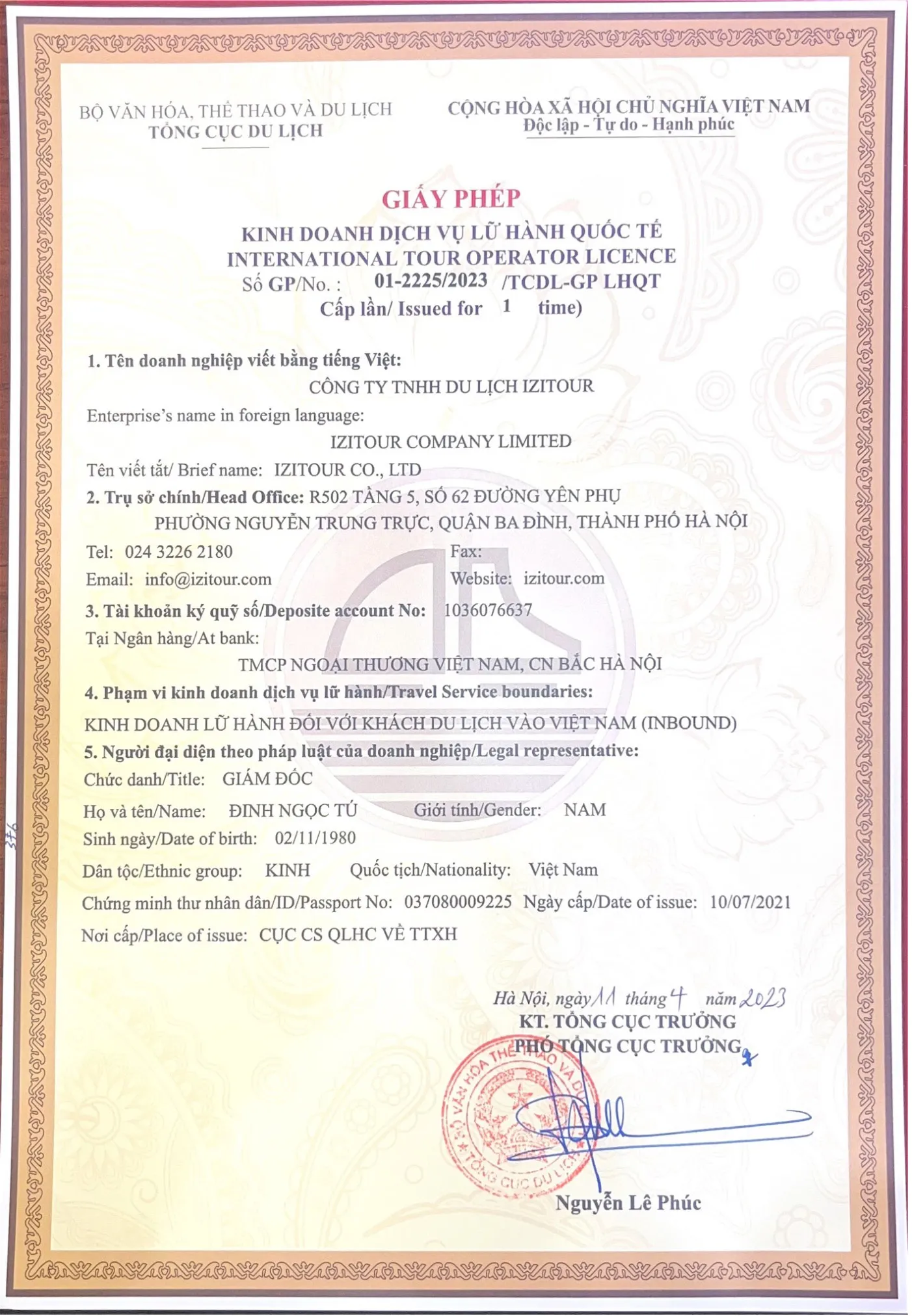The Saigon River is one of the city’s most overlooked landmarks. Most people see the Saigon River from a rooftop bar or hotel building, snap a photo, and move on. But ask yourself this: is it just a backdrop, or is there something worth exploring here?
The truth is, the Saigon River has shaped this city more than most realize. It carried traders, colonizers, and cargo long before motorbikes took over the streets. It’s been a lifeline during peace and a battleground during war. And today, it’s quietly becoming one of the best ways to experience the rhythm of real, everyday life in the city. In this guide, you’ll get a clear look at why the river matters and how to explore it in a way that’s anything but generic.
The river’s role in Saigon’s history
Long before Ho Chi Minh City became a bustling economic hub, the Saigon River was its lifeline.
The river made early settlement possible. It connected what was once a Khmer fishing village to the rest of the region, allowing trade to flow and new cultures to mix. When the French arrived in the 19th century, they didn’t just build roads, they built around the river. It became a crucial route for shipping goods in and out of the colony, linking Saigon to the Mekong Delta and the South China Sea.
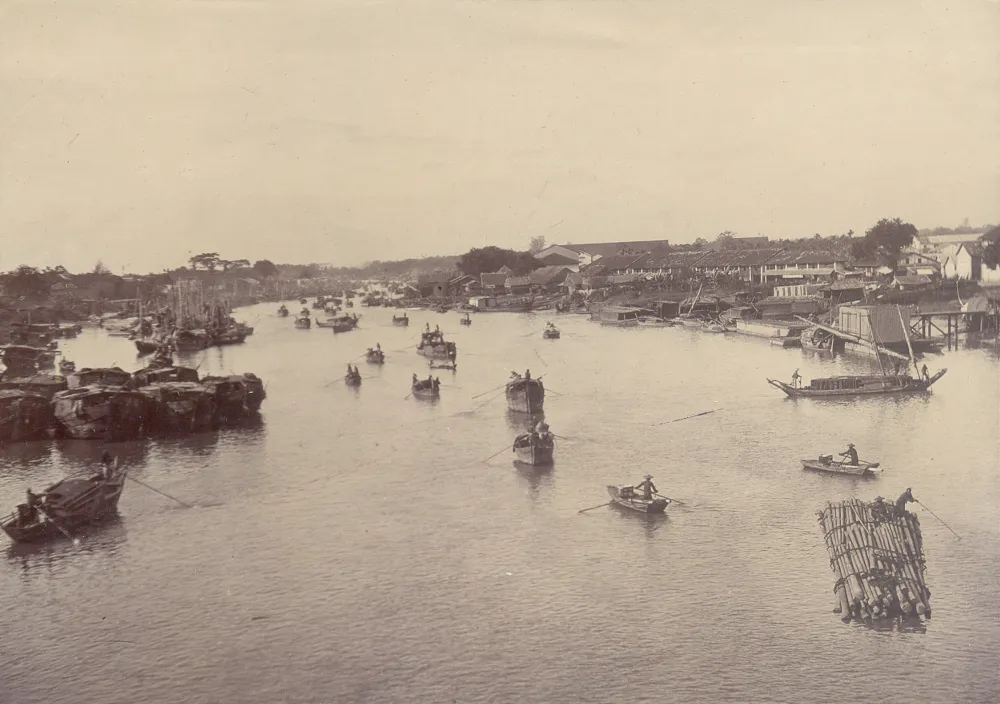
A port on the Saigon River, overflowing with Chinese merchant boats, photographed in 1902
During the Vietnam War, the Saigon River wasn’t just a waterway, it was a strategic military channel. American and South Vietnamese forces used it for moving troops and supplies. At times, it was also the front line, with riverbanks seeing heavy combat.
Even now, the river keeps the city moving. Ships still dock at its ports. Fishermen still cast their nets. And day by day, it’s becoming a bigger part of the city's identity again, not just as a working river, but as a place to relax, explore and reconnect with the roots of Saigon. For locals, it’s a point of pride. For travelers, it’s a chance to understand the city through a different lens — not the skyline, but the waterline.
>> See more: Saigon to Ho Chi Minh City: The change of a meaningful name
The river today: Bustling and beautiful
Stand at any riverside spot in Ho Chi Minh City and you’ll see a scene that feels almost like a contradiction.
Cargo ships glide past luxury yachts. Fishermen cast nets next to construction cranes. A couple poses for wedding photos while, not far off, a tanker unloads cargo at a gritty dock.
A lot of people think the river is either dirty and industrial, or boring and only good for a sunset cruise. Neither is quite true.
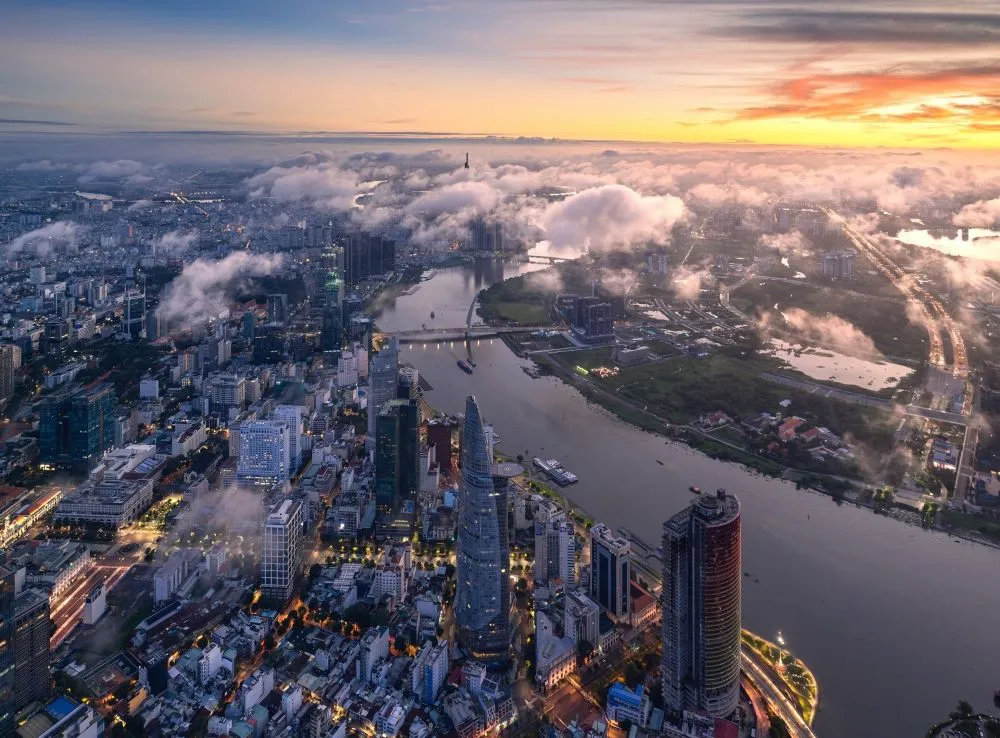
Photo by Nguyen Van Trung
The Saigon river has its working side — it still serves as a key transport route for goods moving in and out of the city. But there’s also a quieter side. In spots like Thao Dien, Binh Quoi, or even parts of District 7, the river gives the city breathing room. It brings in breezes, space, and a bit of calm that’s hard to find in the chaos of downtown.
If you never take the time to get down to the water’s edge, hop on a ferry, or walk along the lesser-known banks, you miss the real charm. It’s not polished and that’s exactly what makes it interesting. This is a river that’s lived through war, commerce, and now rapid development. It has stories in its flow, and you can feel it if you get close enough.
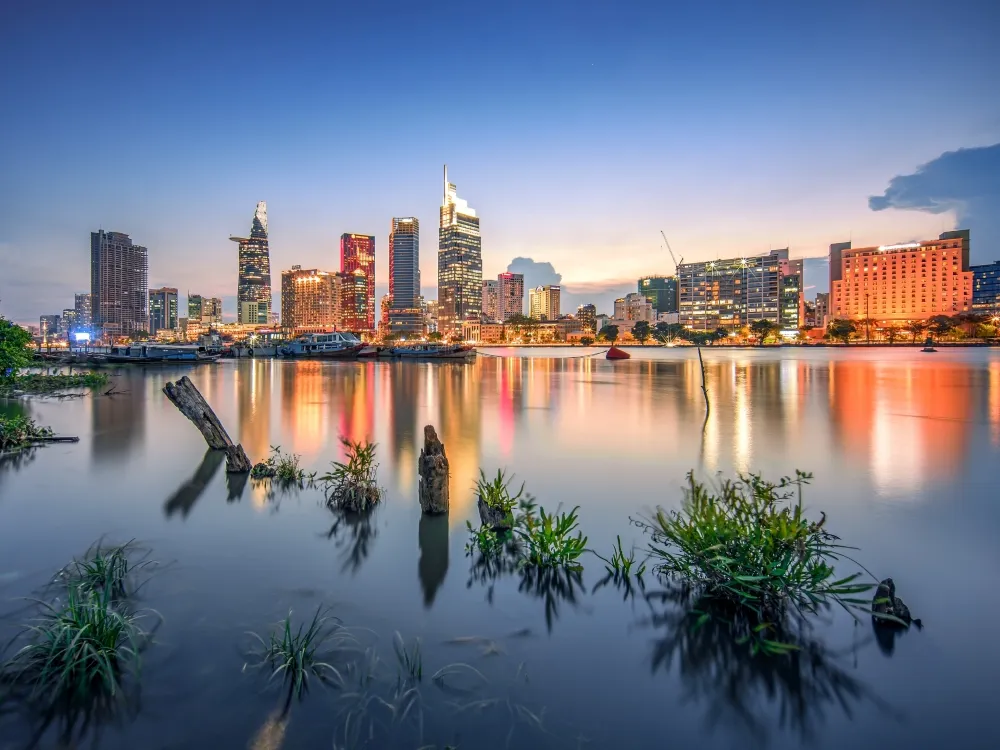
Crossing points: Famous bridges over the Saigon River
Saigon Bridge
Opened in 1961, this was once the only way to cross the river between Districts 2 and Binh Thanh. During the Vietnam War, it was a major strategic point — targeted, damaged, repaired, and fiercely defended. Today, it’s still one of the city’s busiest crossings and a daily part of life for thousands of commuters.
Thu Thiem Bridges
These bridges symbolise the city’s shift toward modern urban development.
Thu Thiem 1 linked District 1 with Thu Thiem in District 2 — a growing business and residential area.
Thu Thiem 2, newly completed, is sleek, striking, and built to support the city’s next chapter. It lights up beautifully at night and gives some of the best city views.
Phu My Bridge
A massive cable-stayed bridge connecting District 7 and District 2. It's not particularly walkable, but it’s a key part of Saigon’s logistics network and a striking piece of engineering. From certain angles, it gives the city a modern, almost futuristic edge.
Ba Son Bridge
This is one of the newer bridges and part of the city's vision to expand and link up key growth areas. It connects the old shipyard area with the fresh skyline of Thu Thiem — symbolic of Saigon’s transformation from industry to innovation.
These bridges aren’t only ways to get from one point to another, but they’re also observation decks, architectural landmarks, and in some cases, living pieces of history. If you're exploring the Saigon River, don't just cruise under them, drive across them, linger a bit, and see the city from a higher vantage point.
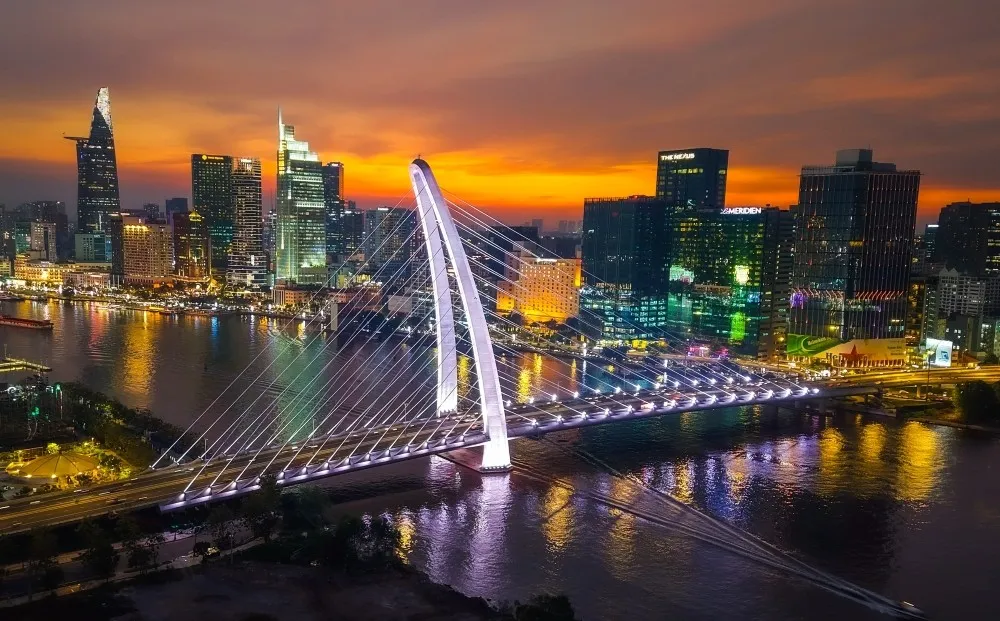
Things to do on the Saigon River
Hop on the Saigon waterbus
This is one of the best (and most underrated) ways to experience the river. It runs from Bach Dang Wharf to Binh An Wharf, with stops along the way. The Waterbus operates daily from 5 PM to 9 PM, with four trips available. It’s affordable, relaxed, and gives you a front-row seat to both city views and quieter river life. This is also a fantastic opportunity to admire the city sparkling at night.
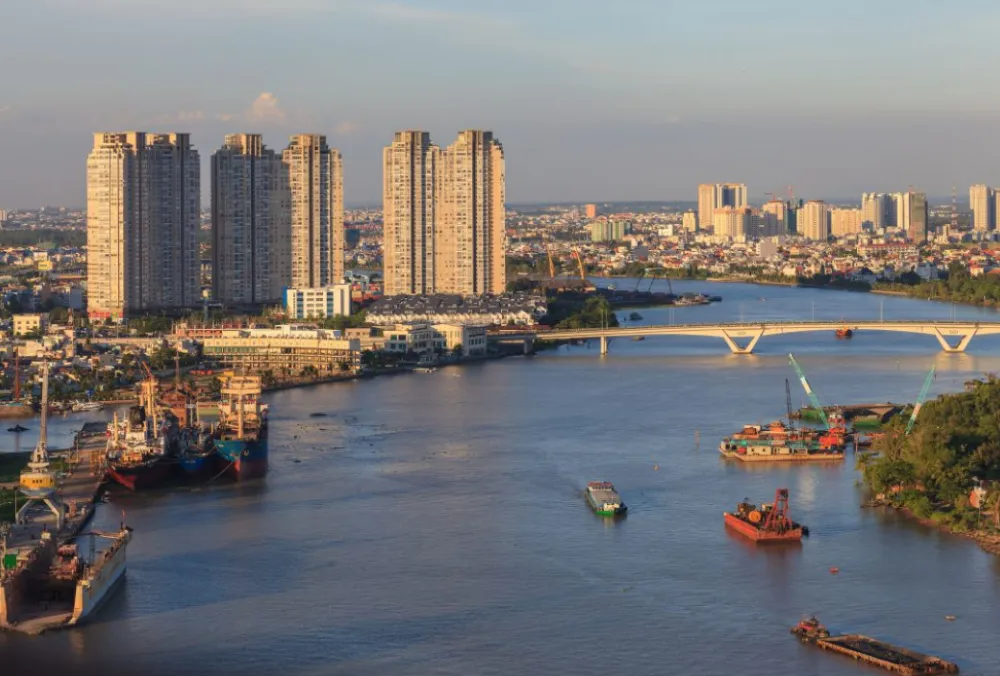
Rent a kayak or small boat
Some local operators now offer kayak or private boat tours along smaller canals that feed into the Saigon River. It’s a different side of the city — close to the water, quieter, and surprisingly scenic.
Take a sunset cruise
There are plenty of companies offering river cruises, some great, some gimmicky. If you're going for a dinner cruise, look for smaller boats or boutique services that avoid the big crowds. Otherwise, a one-hour sunset ride can be a great way to unwind.
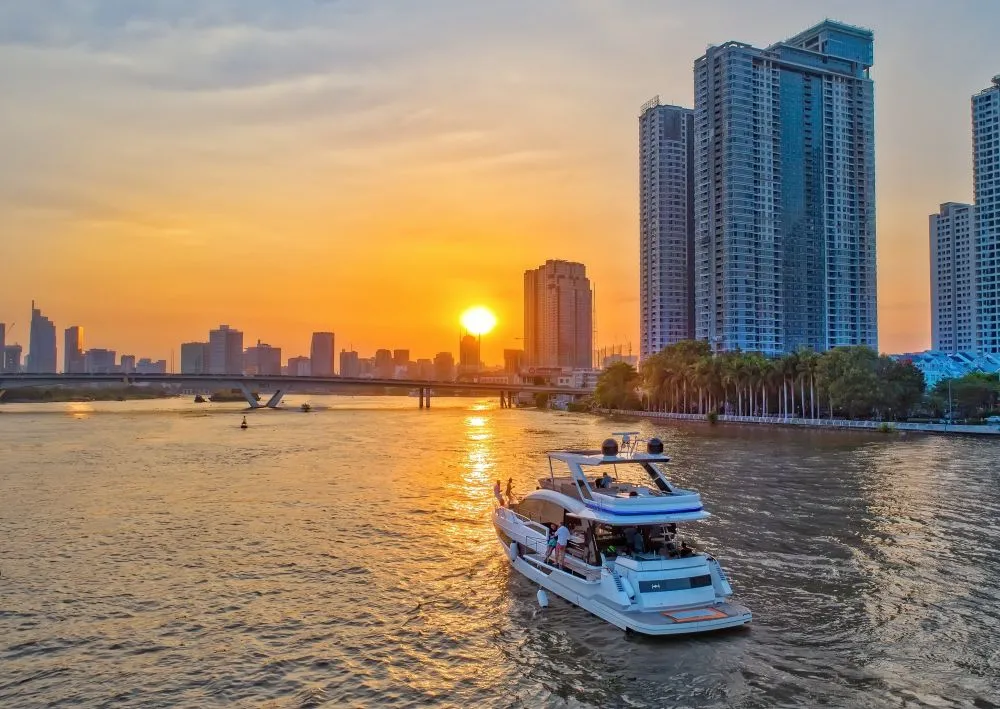
Indulge in a dinner cruise
Experiencing a dinner cruise on the Saigon River offers a unique blend of culinary delight and scenic beauty. The journey typically spans 2 to 3 hours, offering panoramic views of illuminated landmarks like the Bitexco Financial Tower and Landmark 81. The dining experience varies across cruises, catering to diverse palates: set menus and buffet options. Enhancing the dining experience, many cruises feature live music and traditional dance performances. Soft lighting, gentle music, and spacious decks arrangements create a perfect setting for couples, families and small groups. Each cruise provides a distinct experience, catering to different preferences and budgets.

Grab a drink at a riverside spot
Head to a riverside café or bar in Thao Dien or District 7. Places like The Deck Saigon or Villa Song offer a laid-back, luxe vibe with excellent views. It’s a good way to experience the river without committing to a boat.
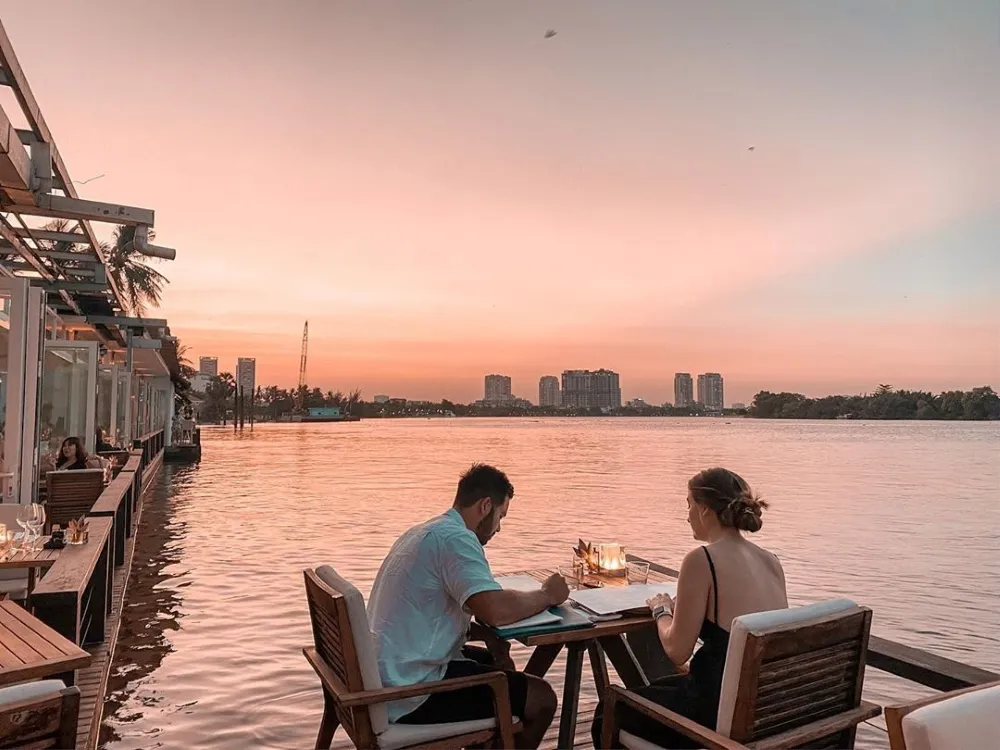
It’s easy to overlook the Saigon River. It’s not loud or flashy. It doesn’t shout for attention the way scooters or skyscrapers do. But spend just a little time near it by walking a bridge, riding a ferry, or sitting by the water with a drink, and the city starts to come into sharper focus. This river has carried centuries of history. It’s seen empires rise, wars rage, and now, a new chapter of rapid urban growth.
See more:
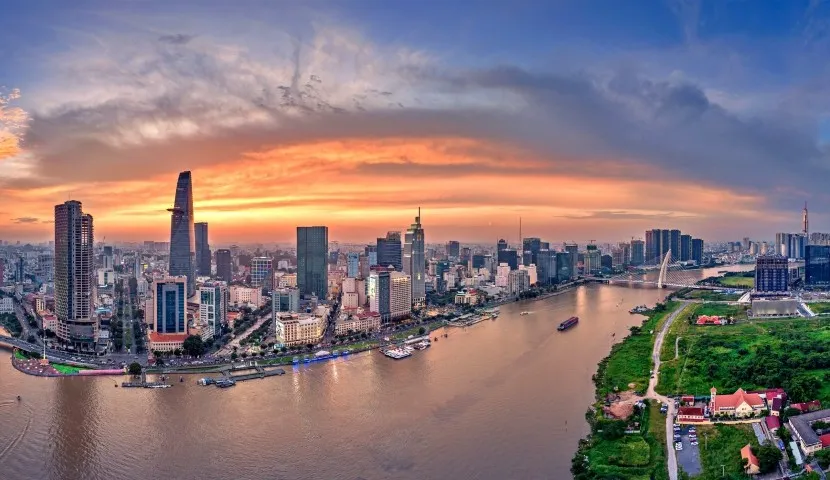







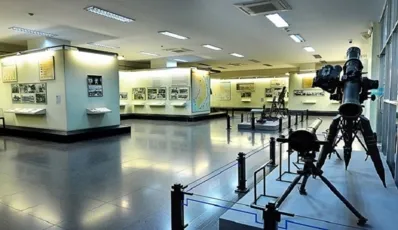

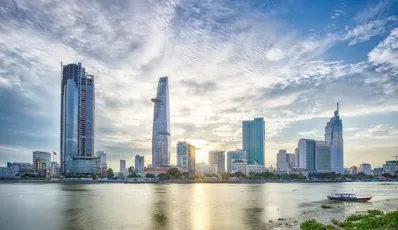
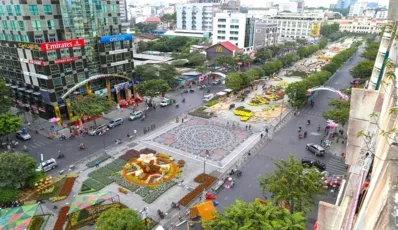
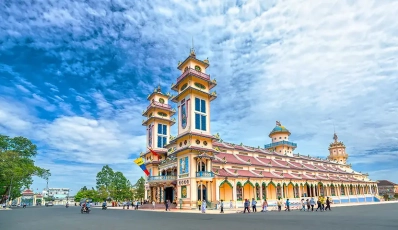
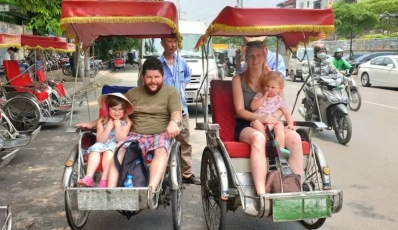
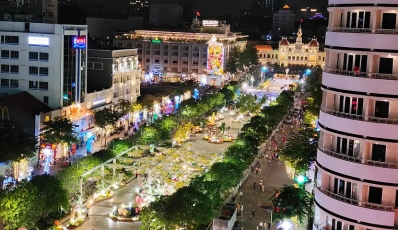
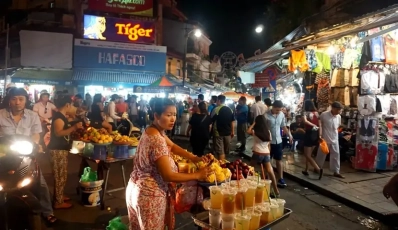
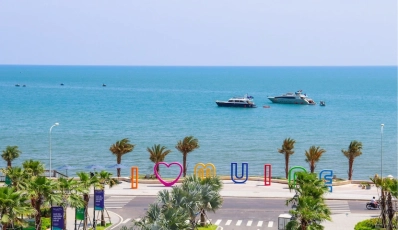
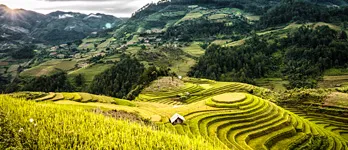
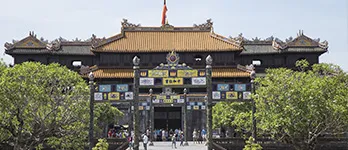
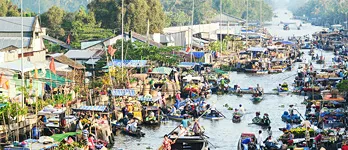

 TRAVELERS' CHOICE 2026
TRAVELERS' CHOICE 2026 